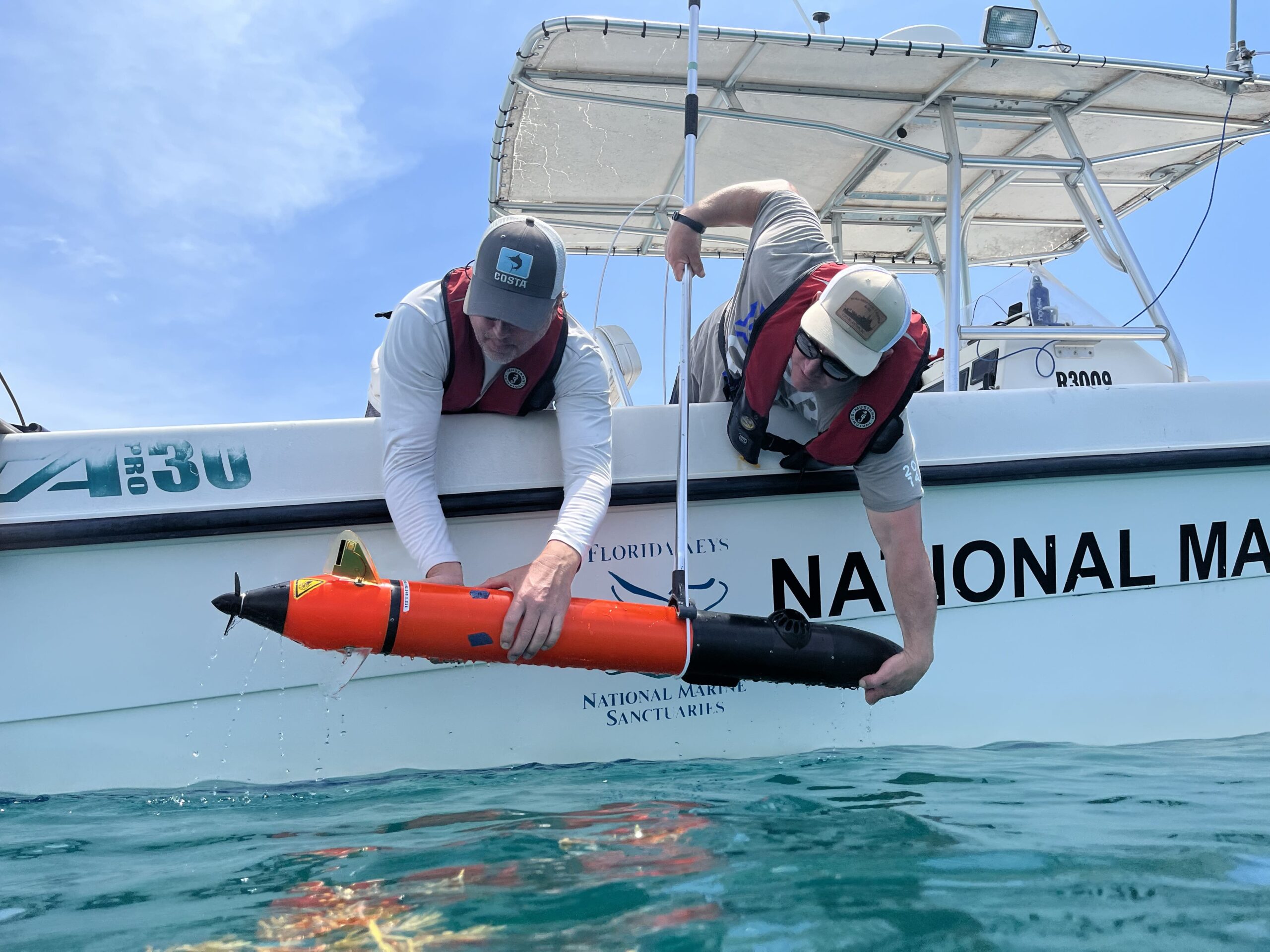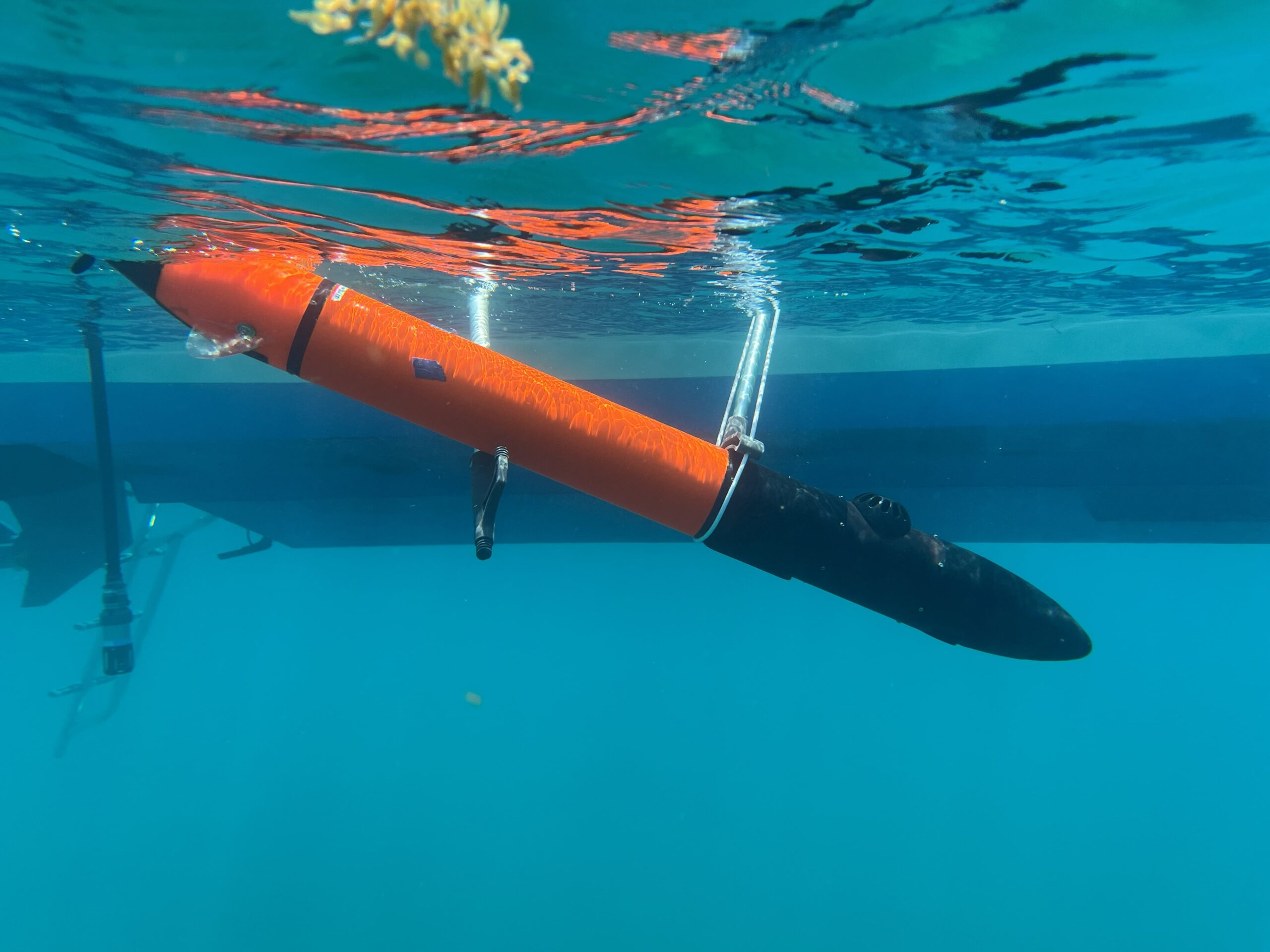
Mission: Iconic Reefs is the largest coral restoration project for U.S. coral reefs to date. Seven reefs spanning the reef tract in the Florida Keys National Marine Sanctuary (FKNMS) will be restored over the twenty year lifespan of the project, launched in 2019. It is critical to evaluate how this restoration work is changing coral populations and reef communities, both to measure the progress of restoration and to inform potential improvements in restoration methods and approaches.
Scientists from NCCOS are working with FKNMS and partners to image portions of the seafloor in both restored and unrestored coral reef areas to measure the progress of the restoration and, if needed, to inform the need for potential changes in restoration approaches.
The team recently completed the first missions using new micro-sized autonomous underwater vehicles (AUVs). These AUVs are four-feet long, torpedo-shaped propelled vehicles equipped with a high-resolution camera, that are programmed to “swim” paths over the seabed and collect imagery. During this mission, the AUVs navigated above shallow coral reefs in FKNMS to collect imagery of the coral reefs and reef restoration areas. In roughly 30 minutes, the AUV is able to collect images that cover an area larger than a football field – over 40 times the area that divers could cover in the same amount of time!
The reef imaged on this first field mission, Eastern Dry Rocks, is one of the seven reefs where restoration is underway. The images will be used to construct 3D models and image mosaics of the reefscape to provide the FKNMS with information in reef areas where restoration is underway or planned, including changes in size, condition and health, survival, density, and distribution of different coral species, as well as changes in the benthic (seafloor) cover of corals, macroalgae, sponges, and other reef organisms over time. Future field missions will aim to collect more imagery at Eastern Dry Rocks and other Iconic Reefs.
Mission: Iconic Reefs is led by NOAA and has an extensive community of partners, including coral restoration practitioners, scientists, and community-led groups. This mapping effort is supported by funding from NCCOS and the NOAA’s National Oceanographic Partnership Program. Learn more about the project here.

